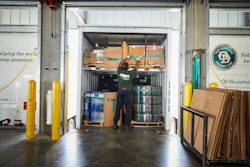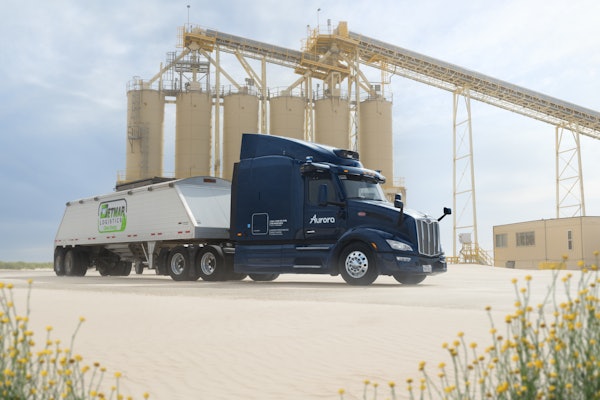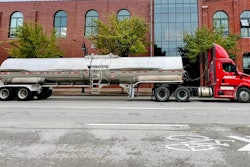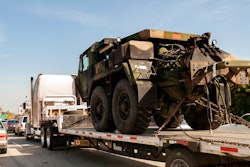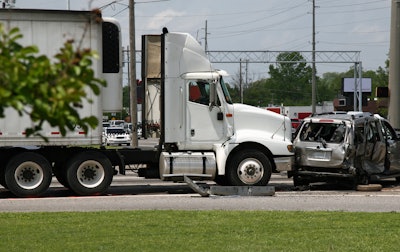
The CCJ article titled, “Group calls for more safety regs in wake of Deadliest Truck Crash report,” September 29, cites comments and statistics from the Truck Safety Coalition about a report the TSC calls “The Deadliest Crash States.”
The report concludes that the “deadliest” states for fatal truck-involved crashes in 2023 (per 100,000 population) are 12 states where, but for three of them (Oklahoma, Mississippi and Alabama), well fewer than 100 total fatalities resulted from a crash involving a large truck over the course of that year. The remaining roll call of “deadliest” states is a who’s who of what some coastal elites might call “flyover country”: Wyoming, New Mexico, North Dakota, Idaho, Nebraska, Arkansas, Kansas, Montana and South Dakota.
The Truck Safety Coalition’s conclusion is a statistical fairy tale, using the ratio of fatalities per 100,000 population to say our most rural, small-population states are the mostly deadly. Is it a coincidence that all of these states are politically red? Is it a coincidence that almost all of these rural states have higher posted speed limits, thus lending credence to the suggestion that speed-governed trucks might make sense (mandated speed limiters is long a goal of the TSC, after all).
Since when did we not use miles driven for all ratios concerning fatalities?
Using just the number of total fatalities, if we want to rank states for this metric, here’s a run at a better “deadliest” states list:
- Texas (730 fatalities)
- California (392)
- Florida (341)
- North Carolina (192)
- Illinois (190)
- Georgia (188)
- Pennsylvania (180)
- Ohio (167)
- Arizona (155)
- Tennessee (154)
In some ways the sheer size of these states explains their high fatality numbers, but isn’t it interesting that the top three also happen to be the three states with the most sizable intrastate truckload carrier populations? They’re also three states shown to have issued glaringly large numbers of non-domiciled CDLs to foreign drivers in recent years (Illinois is in that category as well). What might an analysis of intrastate truckers’ crash rates show us about the fatality statistics in those states? What about a deep dive into the stats in states where 18-year-olds can get CDLs?
Incidentally, the last time I suggested to federal representatives that we use state numbers for million miles driven, I was told such numbers couldn’t be relied on for the reason that many of the states exaggerated or inflated their numbers indiscriminately so they would receive more federal funding. I guess the crash victims advocates and large-carrier trucking interests aren’t the only entities that pervert statistics.
The Truck Safety Coalition is a partnership between Citizens for Reliable and Safe Highways (CRASH) and Parents Against Tired Truckers (PATT), two organizations that have seemed to enjoy political leverage with another non-governmental organization, CVSA, which is mostly funded by and exists at the beck and call of the Federal Motor Carrier Safety Administration (FMCSA).
The above organizations, often enough though not always aligned with the aims of the American Trucking Associations (ATA) and the Trucking Alliance of large motor carriers, have used such statistical gymnastics in attempts to illustrate “relative risk” to make their cases. Any conclusions drawn from their reports must be questioned and scrubbed for bias against our industry. The TSC’s recent “deadliest states” rankings beg for such scrutiny.
There’s one point my own organization, the National Association of Small Trucking Companies, can wholeheartedly agree on with these groups: the truck-involved crash fatality numbers in 2022 and 2023 per 100 million miles driven were some of the worst in more than 30 years!
Raw numbers are bad enough. There were 5,969 truck-involved fatalities in 2022 and 5,472 fatalities in 2023. The former year was the first time since we’ve been recording data that more than 1,000 CDL drivers themselves were killed in their trucks during a crash. Truck-involved fatality numbers have been on a generally steady increase since 2010, the year CSA (Compliance, Safety, Accountability) pushed carriers’ inspection, violation and crash data into the public realm. In real-number terms, truck-involved crash fatalities had posted two years of all-time lows in 2009 and 2010, below 4,000. Some would argue that the low number was attained because of the trucking recession that lasted from 2007 to 2010. Yet the number per 100 million miles driven had also reached an all-time low.
(Coincidentally, 2010 delivered the lowest driver-turnover rate our mega carriers had ever seen. Is it possible that there may be a meaningful correlation there?)
That’s to say nothing of fault in these truck-involved accidents, which the TSC report doesn’t bother to address, either. (Fault studies we do have show the large majority of truck-involved crashes are the fault of the other vehicle involved, not the truck, at a rate that’s getting bigger over time despite the horrible recent-history truck-involved fatality numbers!)
CCJ pointed out that FMCSA in August this year kicked off the process to launch a new study into fatal heavy-duty truck crashes, as required by the 2021 Infrastructure Investment & Jobs Act. The process will start with an information collection request to the White House’s Office of Management and Budget (OMB) for a study titled “Crash Causal Factors Program: Heavy Duty Study Data Collection.” Beware -- and I quote, “this study focuses on fatal crashes involving class 7-8 trucks, collecting and analyzing data on driver, vehicle, motor carrier, and environmental factors from about 30 states that were identified as key sampling locations for a nationally representative sample.”
The study has a start date of this coming year. It will run for two years! Why don’t we just digest and analyze all the available data from 2023? A great start would be to throw out the 84% of accidents where the truck wasn’t at fault, throw out the crashes where deer or other animals are the primary causal factor, throw out the number of accidents involving non-resident or illegal CDL holders, throw out the accidents caused by acts of God, or natural disasters, and for goodness sake throw out the despicable “swerve and squat” or other intentional acts causing an accident in the commission of insurance fraud.
What would be left would be true accidents not caused by drunk driving or impaired CDL holders, not accidents where the hours of service rules were ignored or abused, and not accidents where the clear and undisputed fault was the other vehicle’s driver, not the CDL holder’s!
We need honest statistical data.
We need drivers that understand and speak the English language.
We need less, not more technology in the truck.
We need a better educated populace concerning safe driving around large trucks.
We need a drastic decrease in driver turnover.
We need support from the insurance community to not roll over and settle in questionable at-fault cases.
We need tort reform.
We need to enforce the current rules and roll back existing rules that make little sense, not more rules.
What we emphatically do not need are any of the suggested proposals put forth by the Truck Safety Coalition:
• Require Automatic Emergency Braking (AEBs) for all new CMVs. No. This technology is not ready for prime time and will create an increase in accidents.
• Have FMCSA require new motor carriers to pass a knowledge exam proving that they know and can implement procedures required to operate a regulated motor carrier business. How can this possibly happen when FMCSA already can’t properly rate carriers, timely perform currently required New Entrant audits, or perform successfully any function suggest by Congress or the DOT?
• Incentivize carriers to comply with post-crash drug/alcohol testing statutes in place. This is already happening despite the reticence of state enforcement who are on the accident scene and who refuse to do such testing.





